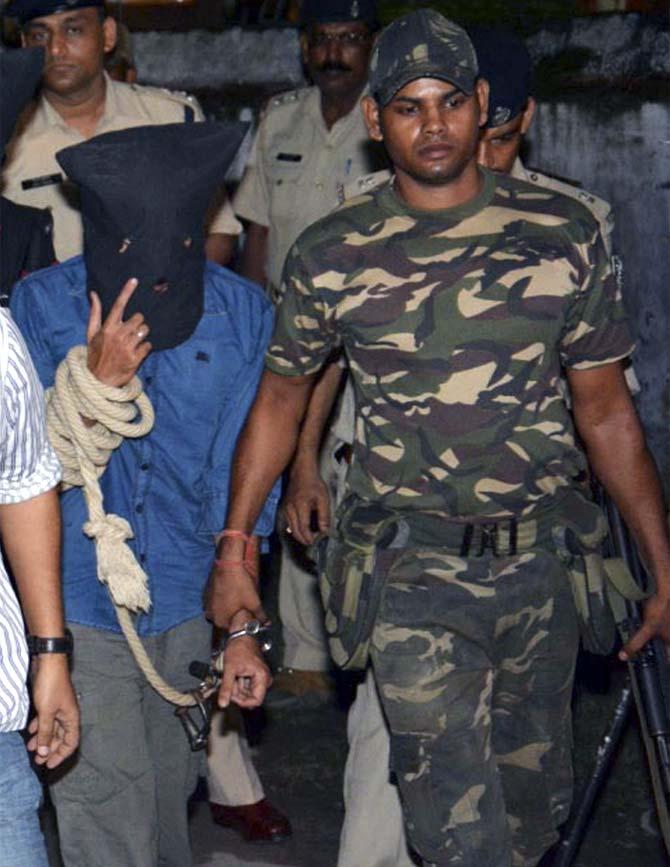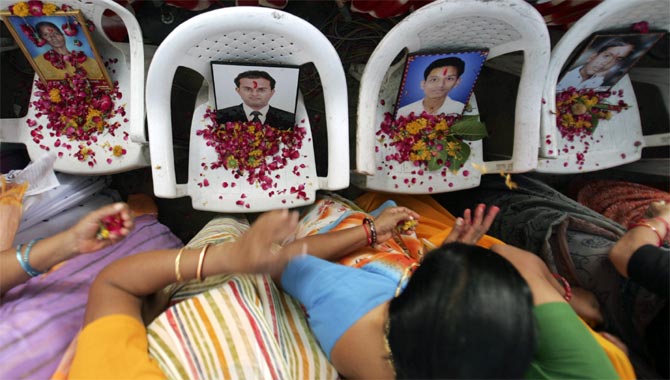
“Be more aggressive and create bad publicity, fear and death in India”.
This was the motto of the Karachi Project -- a covert programme conceptualised by Pakistan's Inter Services Intelligence in 2003 and kicked off by the Indian Mujahideen five years later.
IM chief Yasin Bhatkal, who was recently arrested near the Indo-Nepal border, has proved to be a treasure trove of information for Indian intelligence agencies.
Yasin told his interrogators that he first heard about the Karachi Project when he joined hands with Riyaz and his brother Iqbal Bhatkal, who was leading the Indian Mujahideen till 2008.
The project was aimed at setting up a home-grown outfit to wreak havoc in India. The terror group would also help cover up the role played by Pakistan, which by then had faced a tremendous amount of flak from western countries for its destructive activities in India.
The target of the Karachi Project was to destablise the Indian government, scare the people and carry out frequent terror strikes, while elements in Pakistan provided financial support.
Reportage: Vicky Nanjappa
Click on NEXT for more…

The Indian Mujahideen was set up by the ISI to implement the Karachi Project.
While Riyaz supervised the initial part of the operation, Yasin was in charge of supplying arms and ammunition.
“There was a need to change our style of operation. I worked in the Karnataka modules and used to supply ammonium nitrate. We did not want to source this material from different parts of the country as we realised that it would leave a bigger trail. We had enough material to carry out nearly 100 blasts,” Yasin told his interrogators.
The Karachi Project kicked off with the serial blasts in Ahmedabad in April 2010. When Riyaz discussed the operation with Sainuddin, an IM operative from Kerala, he instructed the latter to put the blast plan on hold.
But Sainuddin, along with fellow terrorist T Nasir, went ahead with the attack.
The Bangalore blasts failed to create any impact; instead, they alerted the security agencies about the nefarious intentions of the IM.
Click on NEXT for more…

Meanwhile, with the security agencies breathing down his neck, Riyaz planned a terror strike in Surat but ended up botching it.
Alarmed at the failure of its first two missions, Indian Mujahideen's top terrorists got their act together and carried out deadly strikes in Ahmedabad, Delhi and Jaipur.
The Karachi Project does not operate within a time-frame, according to Yasin, who revealed that the plan was to continue triggering blasts for as long as possible.
The current chief of the IM pointed out that while the group initially used a Quartz timer to trigger the bomb within a 12-hour period, it later switched to a digital timer that could be programmed 48 hours in advance. This gave the terror group time to trigger the blasts and even change the location of the prospective blast site.
Click on NEXT for more…

“The Karachi Project required us to be self sufficient. Our efforts were appreciated by elements in Pakistan and we were provided with good incentives. But we had to arrange for our own funds. For that, we roped in Sarfaraz Nawaz from Oman, who helped us establish a module in Saudi Arabia to facilitate the flow of funds,” Yasin told police.
He also explained details about his ascent to the IM's top post.
After the arrest of several IM operatives and the departure of top leaders like Riyaz, Iqbal and Amir Reza Khan, the outfit had faced a tough time, Yasin told police.
“The mantle of guiding the IM was passed to me. I have successfully implemented the agenda of the Karachi Project and I have no remorse about that,” he told his interrogators.
Click on NEXT for more…
...